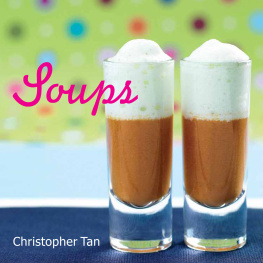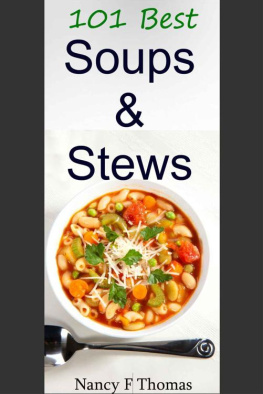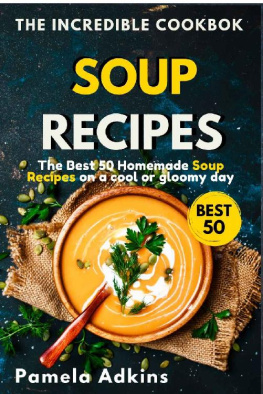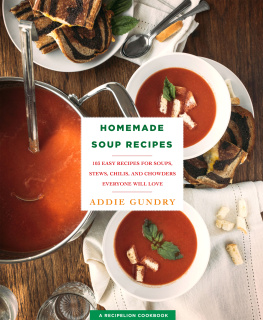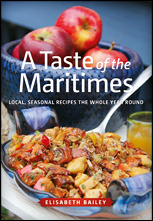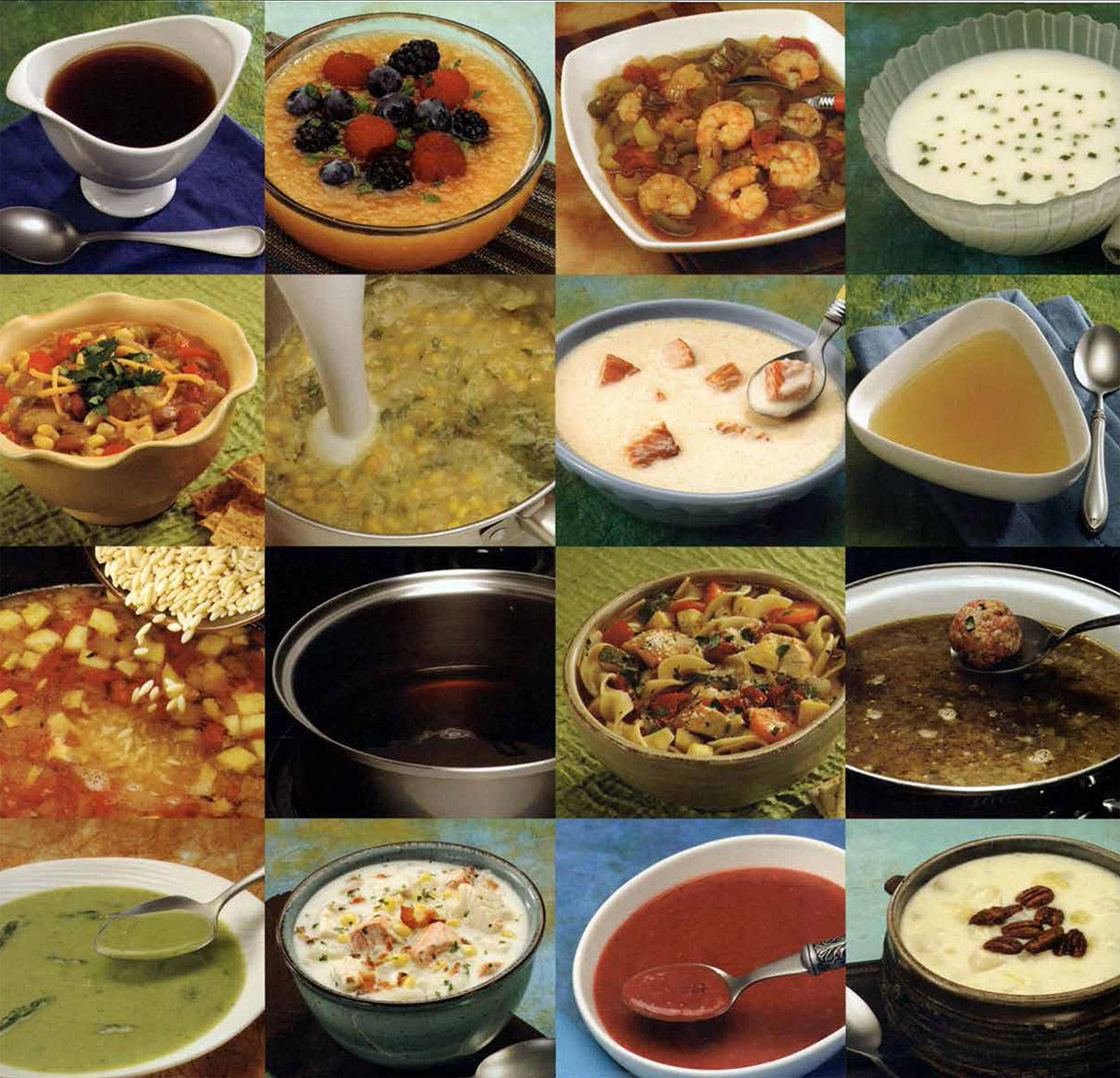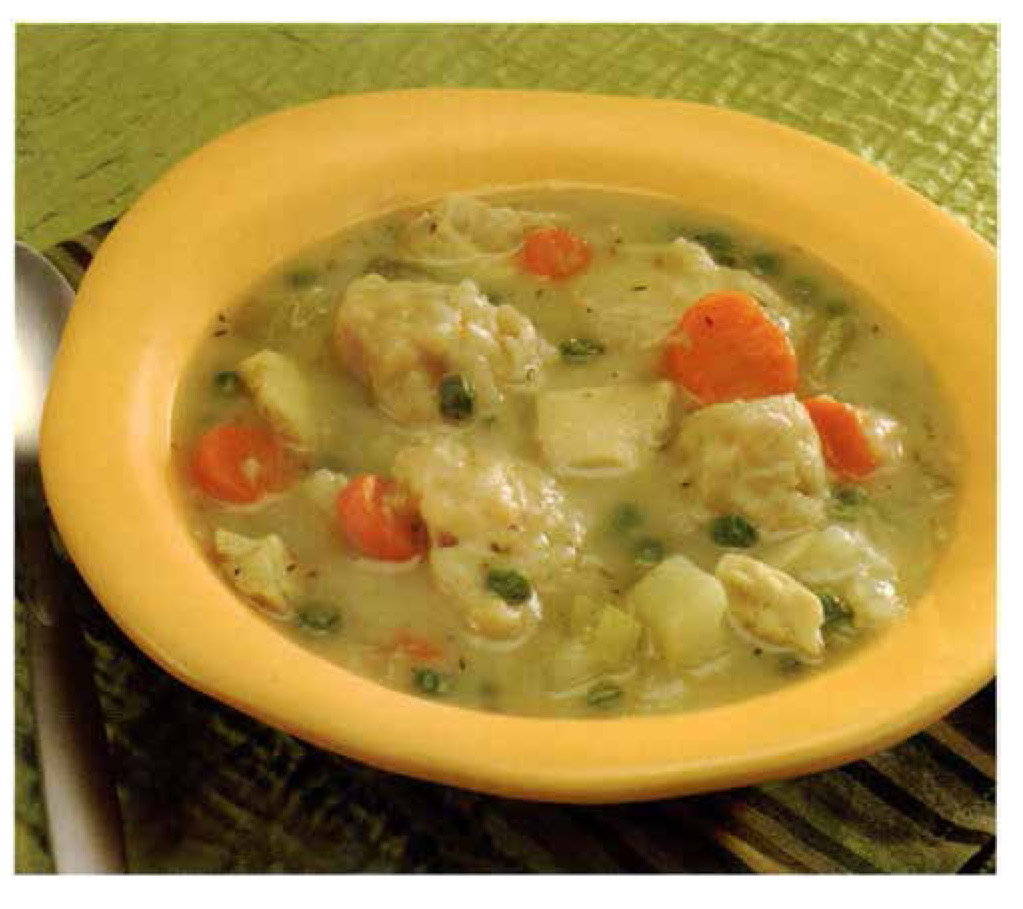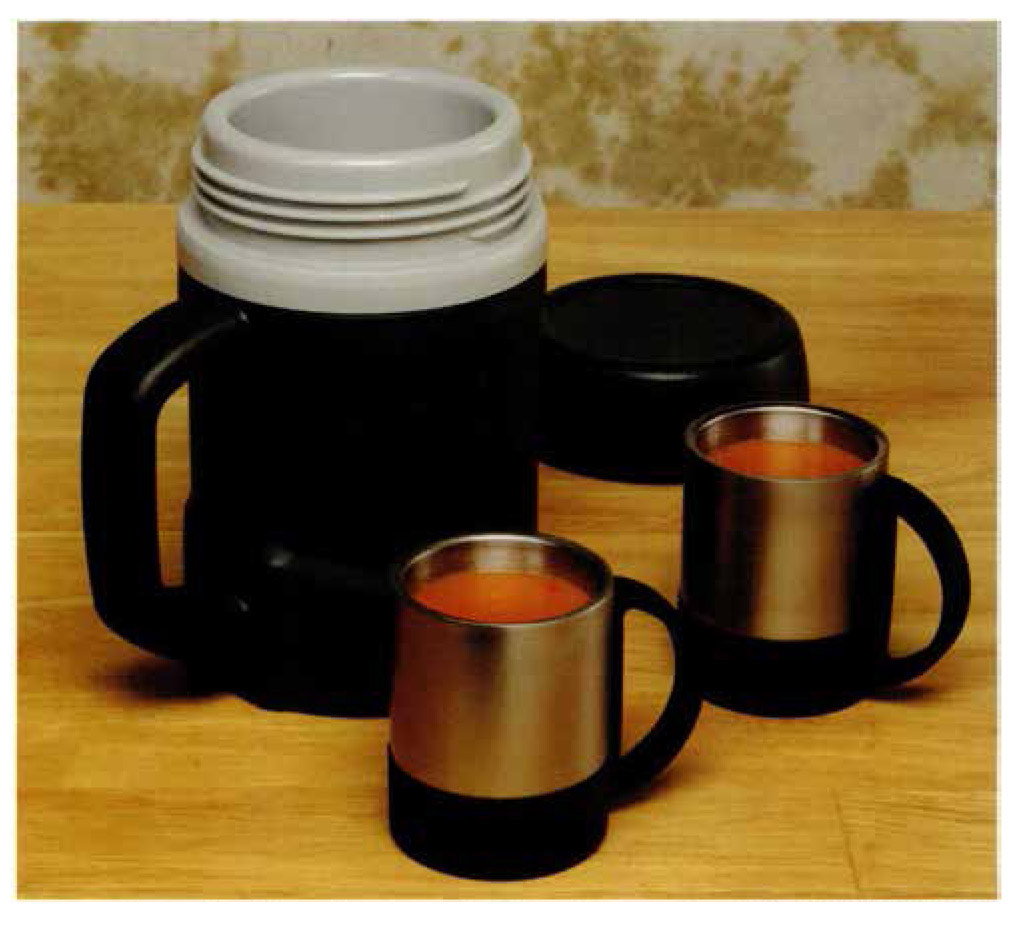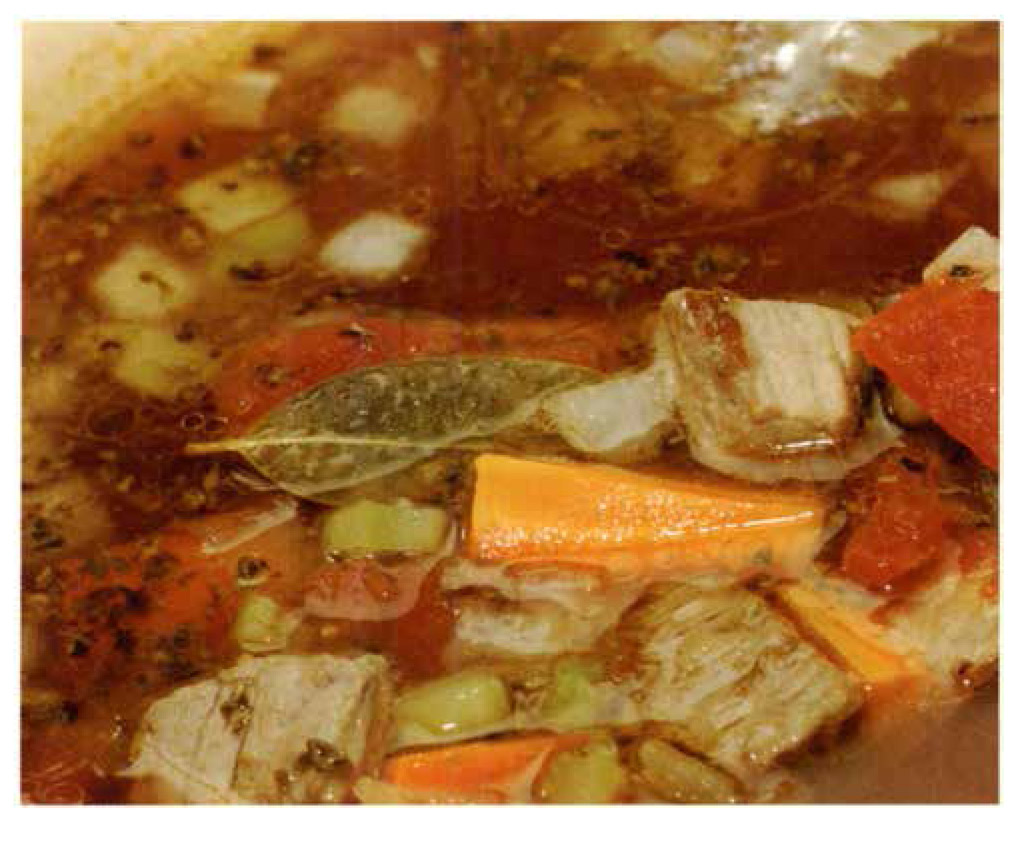SOUP CLASSICS
Copyright 2010 by Morris Book Publishing, LLC
ALL RIGHTS RESERVED. No part of this book may be reproduced or transmitted in any form by any means, electronic or mechanical, including photocopying and recording, or by any information storage and retrieval system, except as may be expressly permitted in writing from the publisher. Requests for permission should be addressed to Globe Pequot Press, Attn: Rights and Permissions Department, P.O. Box 480, Guilford, CT 06437.
Knack is a registered trademark of Morris Publishing Group, LLC, and is used with express permission.
Editor in Chief: Maureen Graney
Editor: Katie Benoit
Cover Design: Paul Beatrice, Bret Kerr
Text Design: Paul Beatrice
Layout: Melissa Evarts
Cover photos by Debi Harbin
Interior photos by Debi Harbin with the exception of p. 5 (right): tobik/Shutterstock; p. 6 (right): Courtesy of Rival/Crock-Pot; p. 7 (left): Courtesy of Rival/Crock-Pot; p. 7 (right): Courtesy of Rival/Crock-Pot; p. 8 (left): Hixson Dreamstime.com; p. 8 (right): Courtesy of Cuisinart; p. 19 (left): Rudyanto Wijaya/Shutterstock; p. 19 (right): Tatiana Popova/Shutterstock; p. 20 (right): Nickr I Dreamstime.com; p. 21 (left): Traveler/Shutterstock; p. 21 (right): Courtesy Hamilton Beach; p. 30 (left): Courtesy 0X0 Good Grips Food Mill
Library of Congress Cataloging-in-Publication Data
Larsen, Linda Johnson.
Knack soup classics : a step-by-step guide to favorites for every season / Linda Johnson Larsen ; photographs by Debi Harbin.
p. cm.
ISBN 978-1-59921-775-8
1. Soups. I. Title. II. Title: Soup classics.
TX757.L37 2009
641.813dc22
2009019050
The following manufacturers/names appearing in Knack Soup Classics are trademarks:
Crock-Pot, Cuisinait, OXO Good Grips, Hamilton Beach, Rival
The information in this book is true and complete to the best of our knowledge. All recommendations are made without guarantee on the part of the author or Globe Pequot Press. The author and Globe Pequot Press disclaim any liability in connection with the use of this information.
Printed in China
10 9 8 7 6 5 4 3 2 1
Dedication
To my dear husband Doug, my best friend and love.
Acknowledgments
Thanks to my family, especially my parents Marlene and Duane, and to my sisters Lisa and Laura. Thanks also to my agent Barb Doyen for supporting me through thick and thin, and to the staff at GPP. Id also like to thank Debi Harbin, the wonderful photographer for this book, for bringing the recipes to life so beautifully.
Photographer Acknowledgments
Special thanks to: Diane DeBrosse, Tina Jones, and Michelle-Sibley Feeser. They shopped, chopped (many tearful pounds of onions), and assisted me on the photography in Knack Soup Classics!.
Debi Harbin
INTRODUCTION
Soup: the word conjures up images of comfort and home. It is a universal food, loved by cultures around the world. Soup can be simple or complex; it ranges from a flavorful broth to a complicated one-dish meal. But how many people have enjoyed a true homemade soup instead of one reconstituted from a box or can?
Soup is not difficult to make. Most of the best soups require two things: good ingredients and time. But the actual time you must invest in a good soup is minimal. Most of the time is spent letting the food bubble away on the stove, in the oven, or in a slow cooker or pressure cooker.
A soup can be as simple as a combination of lentils, water, and a few vegetables, or as complicated as a gumbo with twenty ingredients. The magic happens when the ingredients simmer together, for minutes or hours. The flavors blend and are accentuated by herbs and spices.
And soup is so good for you! Chicken soup, sometimes known as Grandmas penicillin, contains proteins that can help lower blood pressure and anti-inflammatory ingredients that stop the release of chemicals that make you feel sick.
Soup recipes are very tolerant; that is, they will still be delicious no matter what you add to or subtract from the recipe. You can change the vegetables out entirely, use different meats, add more herbs, or change the proportions, and the soup will still be delicious. Measuring accurately is only important with seasonings. Other ingredients can be added in greater or lesser amounts without negatively affecting the recipe.
The basis for all of the best soups is a good broth or stock. These are the easiest soups to make, and the time and effort spent in making a rich and flavorful broth will pay you back many times over. Once you have good broths on hand, you can make every soup in the world.
Soups, chowders, and bisques vary mostly in their ingredients, texture of the finished soup, and thickness. A soup is usually made of a clear broth and ingredients added for flavor, color, and texture. Chowders are a thicker soup, with added cheese and dairy ingredients. And bisques are thickened with milk and egg yolks, sometimes pureed for a velvety texture.
The soups in this book were selected for their classic appeal and timelessness. Once you understand how to make them, you can vary the ingredients and create something brand-new. Soup is a very forgiving food; you can change almost all of the ingredients and it will still taste wonderful.
You can enjoy soup any time of the day or night. Some soups are delicious for breakfast, lunch, dinner, and snacks. Soup can be the perfect treatment for a cold or an elegant first course to start a formal dinner.
Soups are a great choice for your lunchbox, too. A well-made insulated thermos is essential for packing cold or hot soups. To prepare the thermos for hot soups, rinse it out with boiling water, then immediately add the simmering soup. Seal the thermos; it should stay hot up to 6 hours.
For cold soups, rinse the thermos with very cold water, then add the already chilled soup. Dont expect a hot or cold thermos to be able to heat or chill soups; theyll just hold them at a safe and palatable temperature.
There are quickly made soups, then there are soups that simmer for hours, either in the slow cooker or on the stove. Soups dont have to cook for a long time to be of high quality. Some quickly made soups include Beer Cheese Soup, fruit soups, and egg drop soup. The key to short-cooking soups is to use a full-flavored broth; that makes the soup taste as if it cooked for hours.


